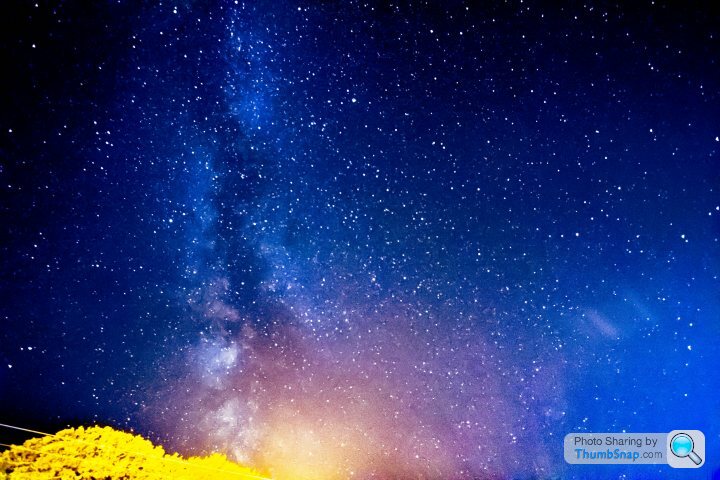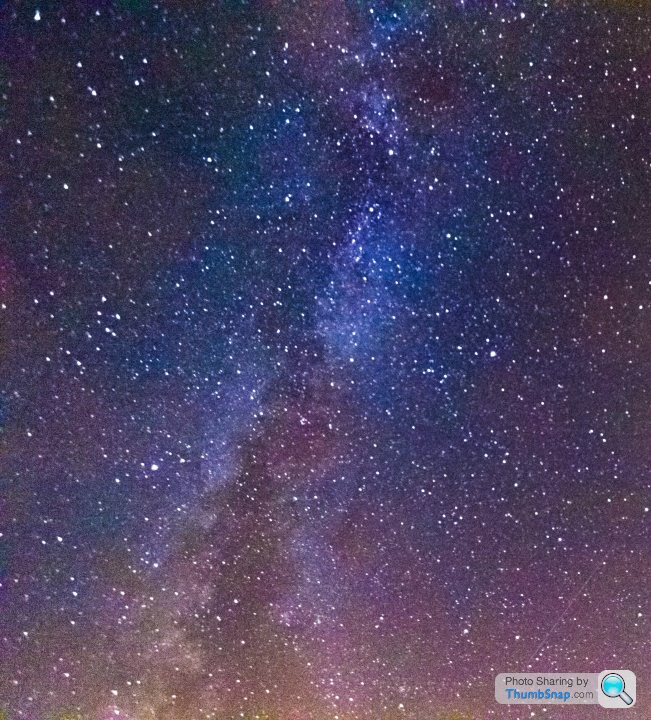1st Attempts at Astrophotography
Discussion
Looking for tips and feedback please folks.
I know my way around film cameras but it's frustrated me for years that I'm a real novice when it comes to stills!
So, being a self proclaimed space nerd I thought I'd try pointing at the stars.
These are the results of the best 2 photographs I could manage. Can anyone advise how to improve as they are bloomin' grainy and I have no idea whether this is an issue with something I'm doing in camera or something I should be doing better in Lightroom?
All suggestions welcome!
Thanks


I know my way around film cameras but it's frustrated me for years that I'm a real novice when it comes to stills!
So, being a self proclaimed space nerd I thought I'd try pointing at the stars.
These are the results of the best 2 photographs I could manage. Can anyone advise how to improve as they are bloomin' grainy and I have no idea whether this is an issue with something I'm doing in camera or something I should be doing better in Lightroom?
All suggestions welcome!
Thanks


I have had one night at this, my shots were useless primarily because I didn’t have the focus right.
On the plus side there’s loads of help and advice online for setting, plus the rule to use for shutter speed, it’s something to do with 500 being divided by your focal length to give you the maximum shutter opening to avoid trails.
I used a 24mm lens so I made sure all my shots were less than 20 seconds shutter speed to avoid star trails.
The next moonless night is 7th September I understand, so I’ll be out giving it another go, just got to improve that manual focus technique!
On the plus side there’s loads of help and advice online for setting, plus the rule to use for shutter speed, it’s something to do with 500 being divided by your focal length to give you the maximum shutter opening to avoid trails.
I used a 24mm lens so I made sure all my shots were less than 20 seconds shutter speed to avoid star trails.
The next moonless night is 7th September I understand, so I’ll be out giving it another go, just got to improve that manual focus technique!
You're going to struggle slightly if f/3.5 is your widest aperture, but it's worth looking at the ISO you're using. Lower ISO settings often don't result in lower noise in low light situations due to some cameras being 'ISO invarient'. You might actually get less noise using a higher ISO such as 6400 or even 12800 (assuming shutter speed and aperture remain constant):
How to Find the Best ISO for Astrophotography: Dynamic Range and Noise
It may also be worth looking into taking multiple images and 'stacking' them in post processing to average out the noise:
Stacking: How To Reduce Noise In Photoshop For Astrophotography Like a Pro
How to Find the Best ISO for Astrophotography: Dynamic Range and Noise
It may also be worth looking into taking multiple images and 'stacking' them in post processing to average out the noise:
Stacking: How To Reduce Noise In Photoshop For Astrophotography Like a Pro
DIW35 said:
To get round the problem of grain if using high ISO or star trails if using lower ISO and longer shutter speeds, you can do multiple exposures and stack them using free software. I can't remember the name of it, but a Google search should bring it up.
That's interesting! ThanksH18 ENF said:
DIW35 said:
To get round the problem of grain if using high ISO or star trails if using lower ISO and longer shutter speeds, you can do multiple exposures and stack them using free software. I can't remember the name of it, but a Google search should bring it up.
That's interesting! ThanksGassing Station | Photography & Video | Top of Page | What's New | My Stuff



